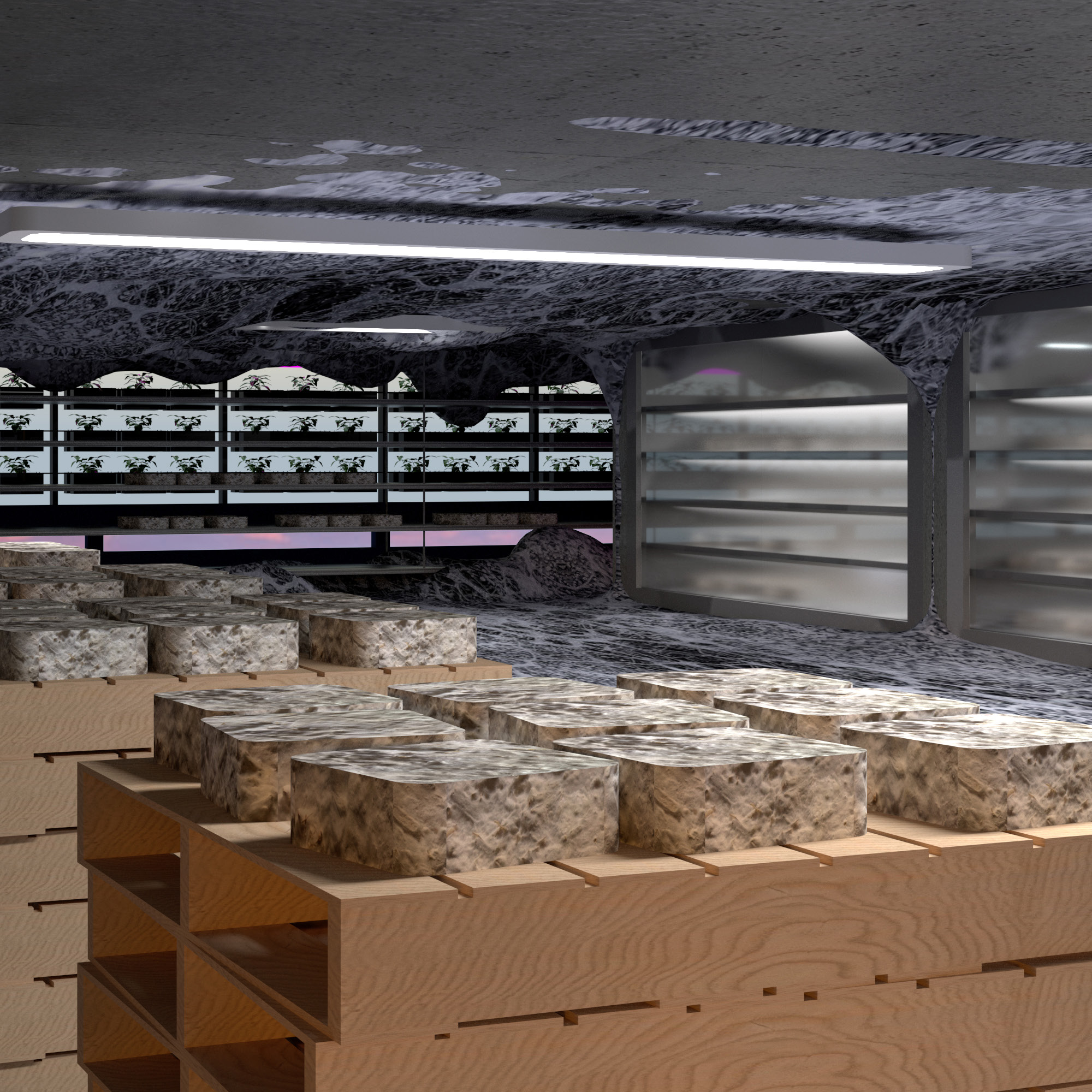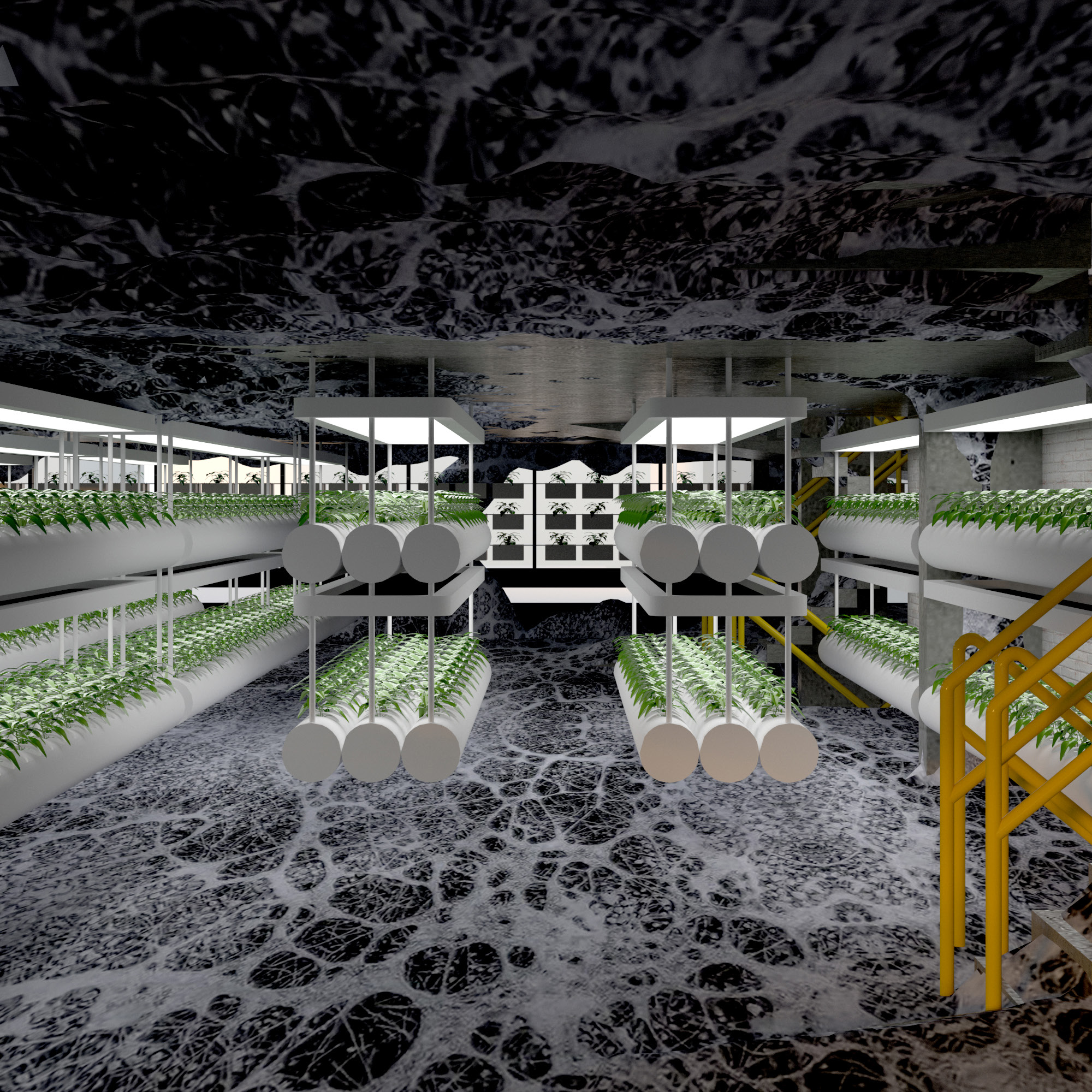ENTER FUTURE DISTRIBUTION CO.
2020
Situated on the corner of Melbourne’s Russel and Little Bourke Streets, Anaerobic Exchange occupies what was once a popular car park. When it was first constructed in 965, Total House was a reflection of the City’s boom in car ownership. With the approaching arrival of the third industrial revolution, an increase in shared transport and self-driving cars will cause the multistory car park to become space for new opportunity. Through the architectural approach of adaptive reuse, Anaerobic Exchange aims to encourage participants to become more aware of and involved in the production of the energy they consume.
The system relies on food waste as its input. In return it produces energy, which is used to produce fresh food and sustainable building and packaging material. Waste is disposed via two systems, one smaller disposal box for the general public and one larger conveyor belt for commercial quantities. The waste is pulverised and carried to the digestion plant. Upright conveyor belts, either side of a central lift core, move the waste from the basement to the digestion plant. Here the waste undergoes a process called anaerobic digestion. The waste is held in a series of tanks called digestion chambers, where methane gas is produced and trapped. This gas is then stored in external tanks. When it is required the bio gas is burnt in a generator, producing electricity. This electricity powers an urban farm, which wraps itself around the exterior and northern side of the building. ‘Shelves’ or planter boxes can be rented and tended to by locals, like a typical community garden plot.
Anaerobic exchange is a localised production hub, designed to address the needs of the local population. In addition, it is a model for the production of clean energy for use in other similar contexts around the world.
2020
Situated on the corner of Melbourne’s Russel and Little Bourke Streets, Anaerobic Exchange occupies what was once a popular car park. When it was first constructed in 965, Total House was a reflection of the City’s boom in car ownership. With the approaching arrival of the third industrial revolution, an increase in shared transport and self-driving cars will cause the multistory car park to become space for new opportunity. Through the architectural approach of adaptive reuse, Anaerobic Exchange aims to encourage participants to become more aware of and involved in the production of the energy they consume.
The system relies on food waste as its input. In return it produces energy, which is used to produce fresh food and sustainable building and packaging material. Waste is disposed via two systems, one smaller disposal box for the general public and one larger conveyor belt for commercial quantities. The waste is pulverised and carried to the digestion plant. Upright conveyor belts, either side of a central lift core, move the waste from the basement to the digestion plant. Here the waste undergoes a process called anaerobic digestion. The waste is held in a series of tanks called digestion chambers, where methane gas is produced and trapped. This gas is then stored in external tanks. When it is required the bio gas is burnt in a generator, producing electricity. This electricity powers an urban farm, which wraps itself around the exterior and northern side of the building. ‘Shelves’ or planter boxes can be rented and tended to by locals, like a typical community garden plot.
Anaerobic exchange is a localised production hub, designed to address the needs of the local population. In addition, it is a model for the production of clean energy for use in other similar contexts around the world.
RMIT University Master of Architecture Design Studio, 2020
Supervised by Andre Bonnice & Jean-Marie Spencer
Supervised by Andre Bonnice & Jean-Marie Spencer





